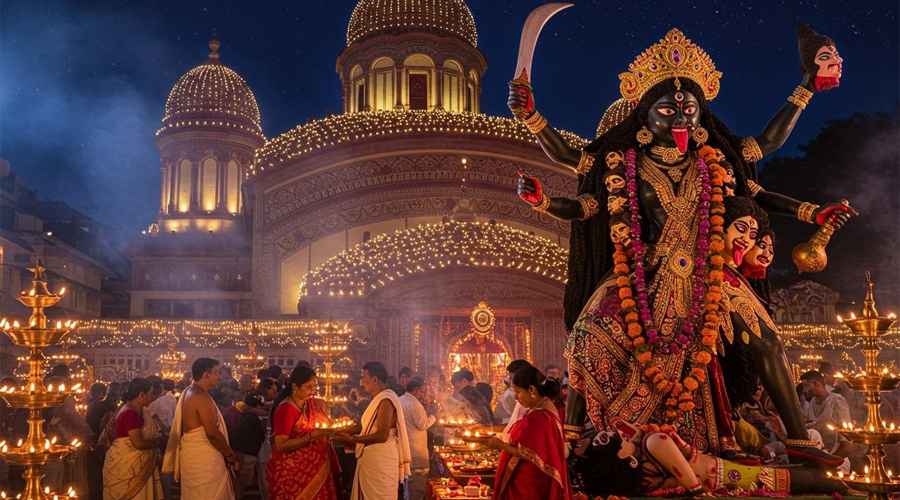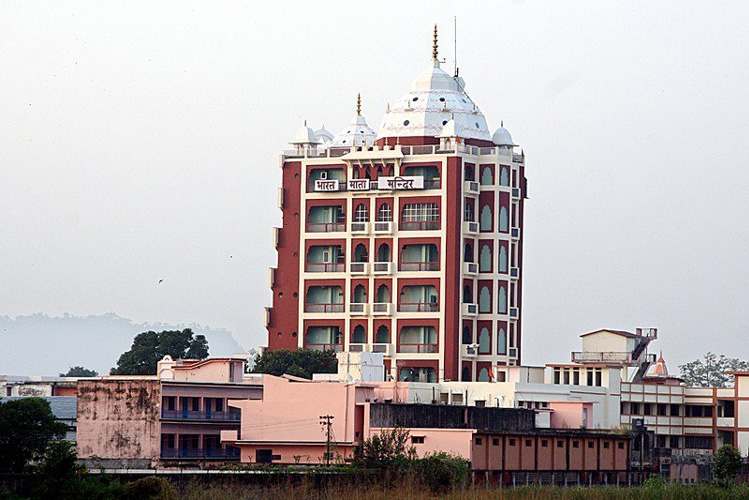Nestled in the peaceful locality of Banjara Hills, Hyderabad, the Badrinath Temple stands as a remarkable tribute to the sacred Badrinath Dham of Uttarakhand, one of India’s most revered Char Dhams. The temple is not just a place of worship but also an architectural marvel that embodies devotion, cultural richness, and artistic craftsmanship. Surrounded by urban vibrancy, the temple offers a tranquil atmosphere where devotees can immerse themselves in prayer and experience divine serenity.
Origins and Inspiration
The Badrinath Temple in Hyderabad was conceptualized to bring the spiritual essence of the Himalayan shrine closer to devotees living in southern India. Built with great attention to traditional North Indian temple architecture, the temple mirrors the original Badrinath located in the Garhwal Himalayas near the Alaknanda River. The presiding deity is Lord Vishnu in his form as Badrinarayana, seated in a meditative posture beneath a golden canopy, reminiscent of the sacred Himalayan abode.
Established by visionary philanthropists and devotees in the late 20th century, the temple has since become one of Hyderabad’s most visited spiritual landmarks. It provides those unable to undertake the long and arduous Char Dham Yatra an opportunity to offer prayers and receive blessings from Lord Vishnu right in the heart of the city.
Architectural Beauty and Design
One of the temple’s most striking aspects is its architectural layout. The structure is designed in traditional Nagara style, featuring layered spires or shikharas that resemble the Northern Indian temples. The temple entrance, adorned with intricate carvings and ornate pillars, leads to a spacious sanctum that houses the main idol of Lord Badrinarayana. The deity is flanked by idols of Goddess Lakshmi, Garuda, and Kubera, mirroring the arrangement seen in the Himalayan Badrinath shrine.
The temple’s walls display mythological scenes from the Vishnu Purana and Srimad Bhagavad Gita, narrating the stories of Lord Vishnu’s various avatars. The use of bright sandstone hues and decorative motifs lends the temple an aesthetic aura that captivates both devotees and architecture enthusiasts. During the evening, when the golden lights reflect upon the temple’s façade, the ambiance becomes spiritually uplifting.
Spiritual Activities and Daily Rituals
The Badrinath Temple in Hyderabad follows a structured schedule of rituals similar to that of the original Char Dham temple. The day begins with Suprabhatam—a ceremonial awakening of the deity—followed by Abhishekam (ritual bathing) and Alankaram (decoration with ornaments and flowers). The Aarti conducted every morning and evening is a sight to behold, accompanied by rhythmic chanting, ringing bells, and the fragrance of camphor.
During the month of Karthika Masam and Vaikuntha Ekadashi, the temple draws enormous crowds. Special poojas and recitations of Vishnu Sahasranamam are conducted, invoking divine blessings for devotees. The temple’s priests, well-versed in ancient Vedic traditions, ensure that all ceremonies maintain authenticity and spiritual sanctity.
Festivals and Celebrations
Festivals are celebrated with grandeur at the Hyderabad Badrinath Temple, and each event attracts thousands of visitors. The annual Brahmotsavam is the temple’s most anticipated festival, marked by traditional music, cultural programs, vibrant decorations, and processions of the deity.
Another major celebration is Deepavali, when the entire temple complex is illuminated with earthen lamps symbolizing the triumph of light and knowledge. Janmashtami, Rama Navami, and Vasant Panchami are also celebrated with great fervor. These occasions not only invoke religious devotion but also serve to strengthen community bonds among devotees across the city.
The Temple Complex and Amenities
The Badrinath Temple premises are spacious and well-maintained, with facilities for devotees and visitors of all ages. The temple complex includes separate prayer halls, cultural spaces for spiritual discourses, and areas designated for meditation. There is also a community Annadanam Hall, where free meals are served to devotees daily, promoting the value of compassion and sharing.
Another notable feature is the small pond maintained within the temple grounds, representing the Tapt Kund (hot water spring) of the original Badrinath. Devotees believe that washing hands or sprinkling water from this pond before entering the sanctum purifies the soul and prepares one for divine communion.
The temple management also organizes charitable activities, blood donation camps, and educational programs for underprivileged children. These initiatives reflect the temple’s philosophy of combining devotion with service to humanity.
Accessibility and Visiting Hours
Located on Road Number 12, Banjara Hills, the temple is easily accessible from all parts of Hyderabad. The nearest metro station is Road No. 5 Jubilee Hills, about 15 minutes away. For those traveling by road, the temple offers ample parking space and convenient access via major routes.
The temple opens early in the morning, typically around 5:30 AM, and remains open until 9:00 PM, with breaks in between for ritual preparations. Visitors are advised to dress modestly and maintain decorum within the premises. Photography is usually permitted in the outer areas, but not inside the sanctum.
Best Time to Visit Badrinath Temple in Hyderabad
While the temple remains open throughout the year, the best time to experience its full splendor is during the winter and festive months—from October to February. The cooler climate adds to the serenity, and the festive decorations during Diwali and Vaikuntha Ekadashi make the temple glow with divine charm. Early mornings and evenings are particularly recommended for visitors seeking a calming and meditative experience.
Significance and Devotional Experience
The Badrinath Temple in Hyderabad holds deep spiritual significance for devotees across South India. It serves as a unifying symbol of faith, blending Northern temple architecture with South Indian devotional traditions. Devotees often describe their visits as emotionally uplifting, offering a sense of connection to the divine far beyond ritual practice.
Beyond its religious function, the temple acts as a cultural hub—hosting music concerts, spiritual talks, and youth programs focused on ethical living and humanitarian values. The peaceful surroundings, melodic chants, and gentle temple bells together create an ambience that encourages introspection and spiritual calmness.
Conclusion
The Badrinath Temple in Hyderabad is much more than a replica of the famous Himalayan shrine—it is a living embodiment of devotion, unity, and eternal spirituality. Its architectural grace, divine atmosphere, and community-driven ethos make it one of Hyderabad’s most cherished sacred sites. For devotees seeking heavenly grace or simply a peaceful retreat from the city’s bustle, this temple stands as a beacon of faith and tranquility, bringing the Himalayan spirit of Badrinath closer to home.



